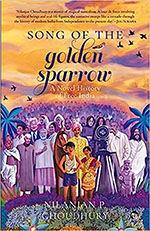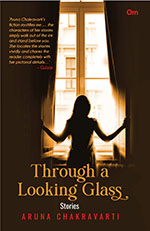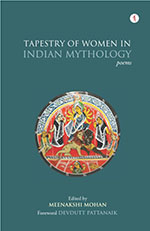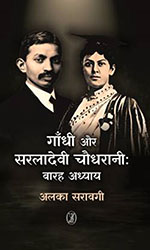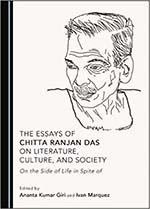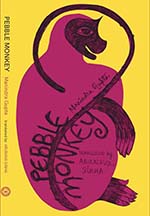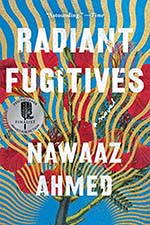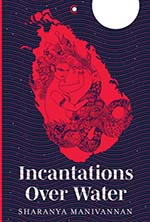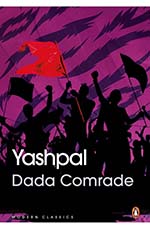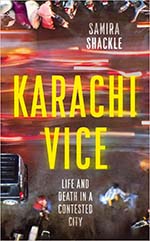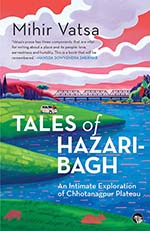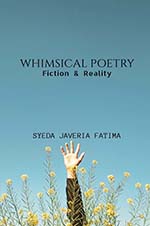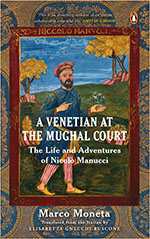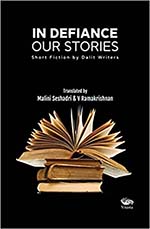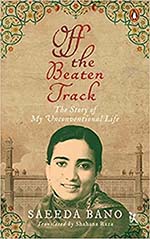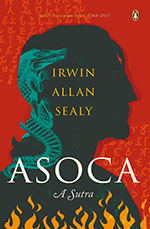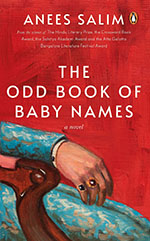Fiction
Since the dawn of history, in every age and in every place, these men have been there. Sometimes they wear skull caps, sometimes their foreheads are smeared with vermillion or sandalwood paste, sometimes crucifixes dangle from their necks. Like the colours of a chameleon, their outer appearance keeps changing, but they are the same men—their eyes reddened by anger and fear, hearts blackened by hate, hands grasping shovels, swords and chains that gleam with bloodlust.
Aruna Chakravarti is well known for her translations and evocative novels about Bengal. This striking collection of stories displays her taut control over the genre of short fiction. Each of the stories reads like a novella, vividly creating varied locations, houses, communities while revealing interior landscapes. They open a window to new worlds by playing with ‘perceptions’, which is also the title of one of the stories.
Tapestry of Women in Indian Mythology is an anthology of poems with contributions from 70 poets, both women and men. The book has an epic-like range and draws attention not only to women from mythology who are part of the popular imagination but more importantly, to those whose narratives have been ignored, suppressed or completely glossed over.
Sarala boarded the train from Ahmedabad. Her body seemed to burn. As if she was in the grips of a fever. She craned her neck to the sills of the window, to breath in a little fresher air. She perhaps went to sleep without intending to. When her eyes opened, her neck was stiff. Half of her face blackened by fine particles of coal flying from the rail engine looked at her from her hand held mirror. She shrank to the core. What if someone saw her like this, what would they make of it?’
If we write novels so, how shall we write History?’ asked Henry James, the masterly American writer of the nineteenth century. The question remains pertinent each time one confronts a historical novel, especially in the context of India where the official narrative rendered by the colonial authority sketched only one side of events.
2020
The book under review is indeed a very carefully curated anthology of essays that brings together the lesser known side of thinker, scholar and activist Chitta Ranjan Das. The volume is a collection of Das’s writings on a wide variety of subjects related to culture, politics, literature and life and thereby holds up the spectacular canvas of his extremely creative and life-affirming personality.
Where do stories come from? Where and how do they reach? How does the reader respond to the stories unknown, unheard and unwritten earlier? How do stories of the other become instrumental in understanding the interface between the self and the other? The twelve stories in Asprishya Ganga and Other Stories articulate the experience specific to identities such as community, class, occupation, region and language.
2022
Pebble Monkey! What an enchanting title, you think. You open the novella to a quaint world–at 12,000 feet, on a snowy mountainous terrain, live ibexes. One ibex dislodges a pebble. The pebble is thrown up in the air, and when it falls it bounces into the tunnel. Soon afterwards, someone can be heard swimming in the water.
Radiant Fugitives by Nawaaz Ahmed is a lavish book, with a plethora of complex themes dealt with in a generous, benevolent way. The canvas is large. It straddles America and Chennai, misogyny and homophobia, Islam and Blackness in America, and a slice of time stretching from America’s attack on Iraq up to Obama’s victory in elections.
Written in lyrical prose, Sharanya Manivannan’s graphic novel, is a treat to read. It evokes emotions as does powerful poetry. The accompanying sketches by Manivannan recreate a magical world under water. Page colours include multiple shades of blue, red, and yellow, while doodles and writing are in white. The book explores stories and lore about merfolk.
2022
…when, as a consequence of the growing age of human society, the swaddling cloth of its infancy starts oppressing its body, would it not be better at that time to create for it an extensive cloth of new ideas? Must we constrain its body such that it fits within its old limits?’—these words are a part of the introduction by the writer Yashpal for his seminal political novel that was considered a pioneer in the world of Hindi literature and was published in the early 1940s.
Life in an ‘edgy’ city is more a cause for dread than for wonder in our part of the world. The violent underside of ‘developing’ neo-colonial/globalizing urban spaces has had its share of steady gazes, for instance, Mumbai, Maximum City or even Calcutta: City of Joy. So, the immersive experience of Karachi that Samina Shackle offers us echoes and resonates with the subcontinental reader in a way that goes beyond exoticization of a culturally and economically distant land.
Tales of Hazaribagh is much more than the exploratory travelogue its title promises: along with a rich, complex narrative of Vatsa’s discoveries of the Chhotanagpur Plateau, it has autobiography, stories of suspense and the supernatural in the best tradition of ghost stories, social critique, historiography, and an intimate introduction to his roads, his waterfalls, his friends and family.
2022
The ‘skein of duality’ that runs through Pronoti Datta’s debut novel gives it its special character, and as one toggles between the past and the present, between people and places, and between culture, politics and history, all of which make up the warp and weft of the story, the reader is drawn irresistibly into its multihued narrative.
Syeda Javeria Fatima’s collection of poems is not as whimsical as the title suggests; in fact, it is quite the opposite. Written in simple rhyme schemes, the poems voice the observations of a child’s world which has been marred by experiences too mature for her. Divided into sections that range from spiritual belief to romantic love, and her mother’s sacrificial omnipresence for her family members to friends that include her schoolmates and her grandparents.
Aripper of a yarn that defies the imagination while bringing to light historical nuggets: this is the story of Nicolo Manucci, a semi-literate Italian teenager who ran away from home to become a renowned medical practitioner in Mughal India, a respected diplomat and a chronicler of the age. Marco Moneta recounts Manucci’s colourful tale with a flair that reads almost like fiction, while providing the perspective that makes the book a useful historical record.
Dalit Literature is not simply literature…Dalit Literature is associated with a movement to bring about change….at the very first glance, it will be strongly evident that there is no established critical theory or point of view behind them; instead there is new thinking and a new point of view’ (Dangle, 1994).Since Dalit writing is, by its very nature, revolutionary inasmuch as it seeks to overturn stereotypes and accepted norms of society and behaviour—therefore, also being transformational—it cannot be concluded that there is a radical ideology at work behind all Dalit writing.
To read Saeeda Bano’s supremely candid, flamboyant, and emotionally charged narrative of her extraordinary life is to launch oneself on a roller coaster ride of high emotional drama that has its own moments of tragedy and comedy. Intense, funny, heart-breaking and inspirational all at the same time, Saeeda Bano’s story is the story of a woman who dared to break taboos.
2021
In Asoca: A Sutra, Irwin Allan Sealy attempts to present the ‘real man’ behind Emperor Ashoka the Great. He uses the spelling ‘Asoca’ to suggest a soft ‘k’, highlighting the way simple villagers pronounce the name, for his mother was not of royal birth. The ‘s’ is pronounced as a sibilant (‘assoka’) in place of the palatal ‘s’ of Sanskrit. Sealy employs the Pali forms for all the names, corresponding to actual usage, rather than written records—Susima, Mahinda, Sanghamitta rather than Sushumna, Mahendra and Sanghamitra.
Anees Salim’s The Odd Book of Baby Names is an expertly conceived novel comprising nine voices relating nine autobiographical narratives, all of which have one thread in common—each narrator has been begotten by the same kingly patriarch. The speakers, progenies born of legally wedded wives, or out of wedlock, many of them unknown to one another and unaware of their common paternity, narrate their quotidian experiences.

